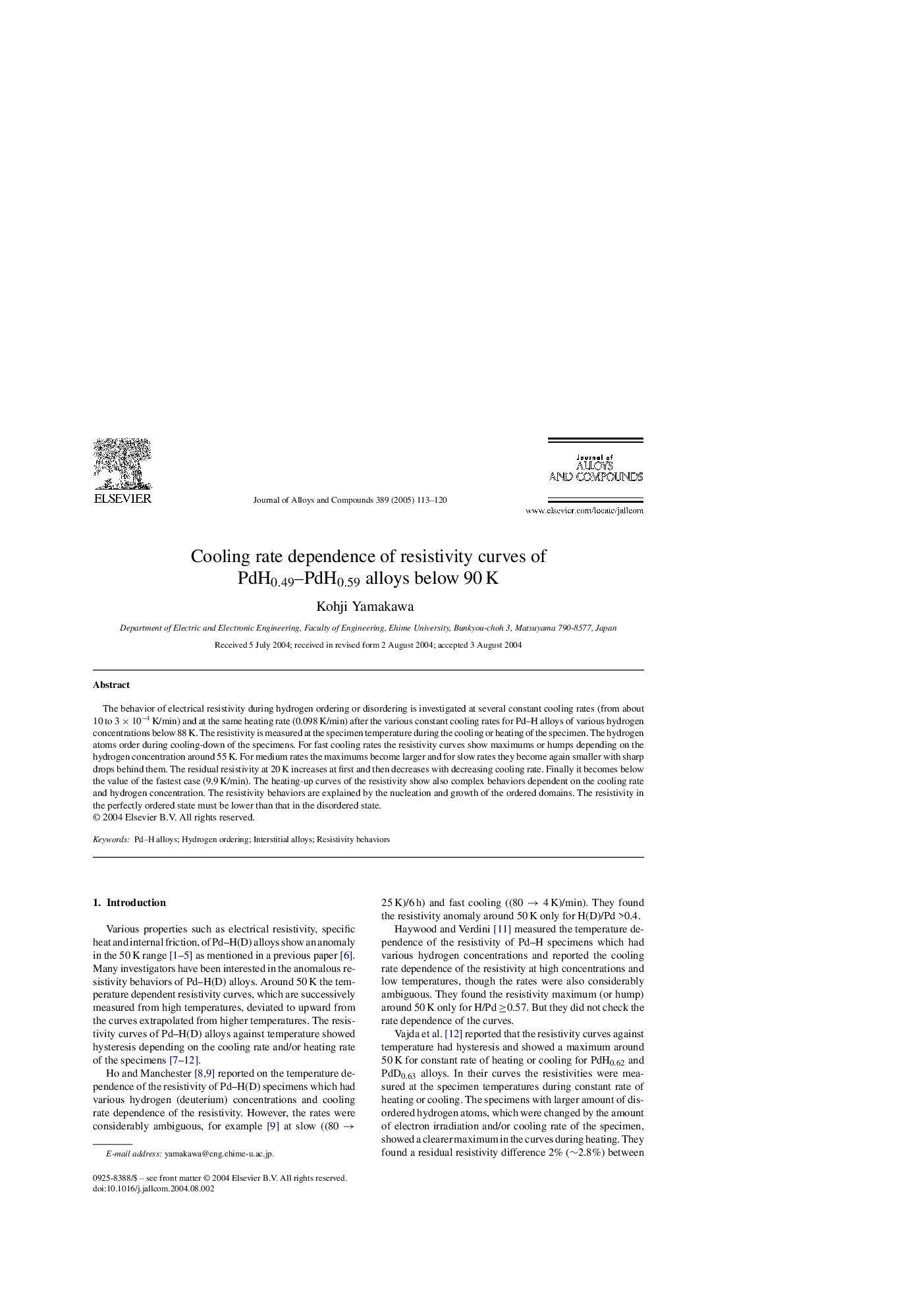| Article ID | Journal | Published Year | Pages | File Type |
|---|---|---|---|---|
| 9804088 | Journal of Alloys and Compounds | 2005 | 8 Pages |
Abstract
The behavior of electrical resistivity during hydrogen ordering or disordering is investigated at several constant cooling rates (from about 10 to 3 Ã 10â4Â K/min) and at the same heating rate (0.098Â K/min) after the various constant cooling rates for Pd-H alloys of various hydrogen concentrations below 88Â K. The resistivity is measured at the specimen temperature during the cooling or heating of the specimen. The hydrogen atoms order during cooling-down of the specimens. For fast cooling rates the resistivity curves show maximums or humps depending on the hydrogen concentration around 55Â K. For medium rates the maximums become larger and for slow rates they become again smaller with sharp drops behind them. The residual resistivity at 20Â K increases at first and then decreases with decreasing cooling rate. Finally it becomes below the value of the fastest case (9.9Â K/min). The heating-up curves of the resistivity show also complex behaviors dependent on the cooling rate and hydrogen concentration. The resistivity behaviors are explained by the nucleation and growth of the ordered domains. The resistivity in the perfectly ordered state must be lower than that in the disordered state.
Keywords
Related Topics
Physical Sciences and Engineering
Materials Science
Metals and Alloys
Authors
Kohji Yamakawa,
